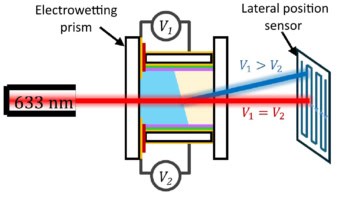
Iron Man, Doctor Octopus, Wolverine, even Geordi LaForge. Body augmentation has been fantasized by writers for decades. Many readers have questioned how realistic the development of such technologies might be in today’s world, as this futuristic vision relies on the human brain’s ability to interface with external devices and learn to use them. Researchers from University College London are investigating the use of motor augmentation with the development of a “Third Thumb,” publishing their findings in Science Robotics.
The Third Thumb augmentation device, designed by Dani Clode, is a 3D-printed robotic digit that is worn on the hand, opposite the user’s natural thumb. Its motion is actuated by two motors mounted on a wrist strap that are controlled by pressure sensors under the user’s big toes.
The researchers trained study participants to use the Third Thumb for five days. During these training sessions, the participants completed a series of reaching, grasping and manipulation tasks designed to present them with a wide range of use scenarios. For example, they used the additional thumb to extend their natural grip, holding a cup while stirring with the remaining natural fingers. In order to test the success of augmentation, the team required participants to multitask, performing arithmetic operations while using the Third Thumb to build a block tower. Across pre- and post-test assessments, all trained participants demonstrated an increased sense of embodiment over the device.
After the training, functional MRI scans showed significantly reduced inter-finger distances of the augmented hand’s representation in the participants’ sensorimotor cortices. That is, the brain activity patterns elicited by moving their individual fingers became more similar. This result corresponds with less distinctiveness between biological fingers in motor areas of the brain after training. When these participants returned to lab after a week of not using the Third Thumb, these changes in the brain had largely subsided, demonstrating the need for regular use of augmented devices for success.
The significance of the results lies in the change: researchers found that use of the Third Thumb changes both motor control of the hand and how the hand is represented in the brain. Furthermore, they observed this effect even when participants were not wearing or using the device – the change occurred as a result of training and remained when the Third Thumb was removed.
The study demonstrates the feasibility of motor augmentation, showing that users embody the augmented device and use it fruitfully with proper and regular training. What’s more, the Third Thumb changed the way the user’s body is represented in the brain. These results are important as they open the door for further characterization of the mechanisms by which augmented motor performance takes place. The researchers call for further exploration of body representation and motor control, which will be crucial for wide implementation of the technology.
In short: watch out, Tony Stark. Soon you might not have the only mechanized suit in town.



